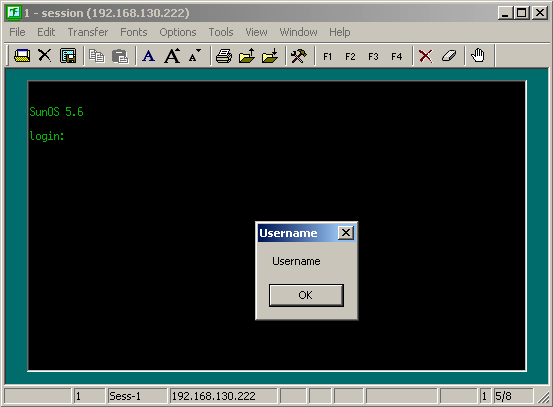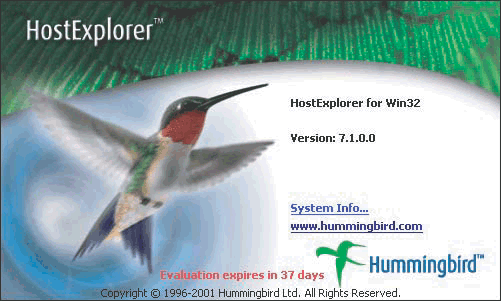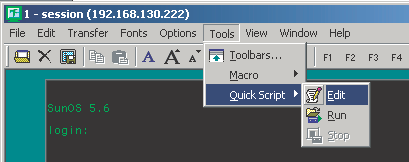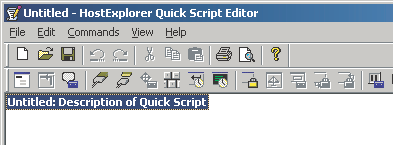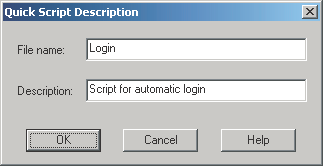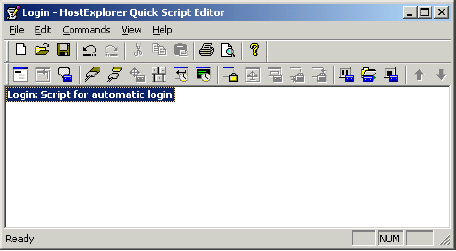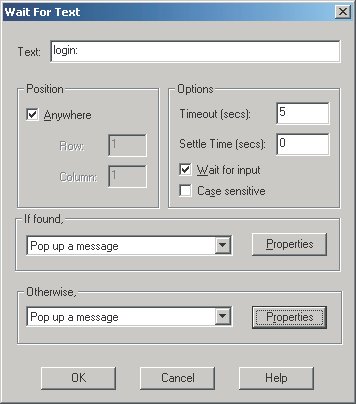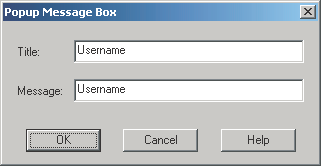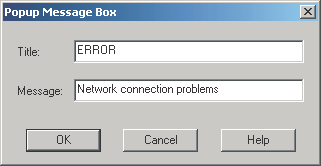-
At the Login dialog box, click Commands > Wait For Text.
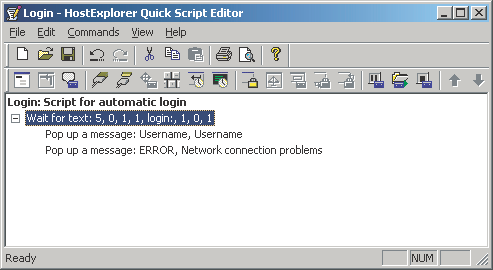
-
Configure the Wait For Text dialog box for password prompts, then click OK.
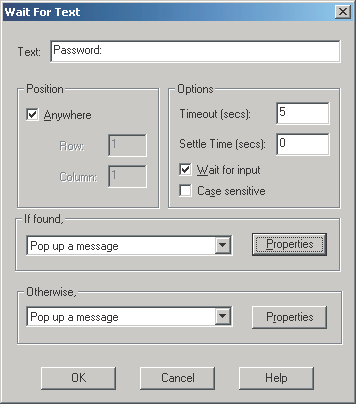
-
At the Wait For Text dialog box, select Properties from the If Found section, configure the Popup Message Box dialog box, then click OK.
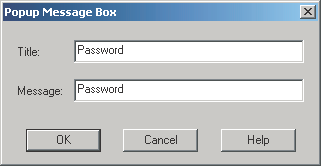
- Type Password in the Title text box.
- Type Password in the Message text box.
-
At the Wait For Text dialog box, select Properties from the Otherwise section, configure the error box, then click OK.
If the Password prompt is not displayed within the designated timeout period, an error message displays.
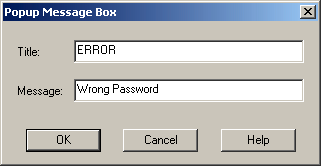
- Type a title in the Title text box.
- Type a message in the Message text box.
After you click OK, the macro is complete.
-
At the Login dialog box, click File > Save As.
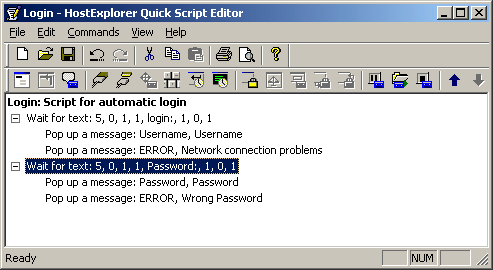
-
Type Login as the filename, click Save, then close the Quick Script editor.
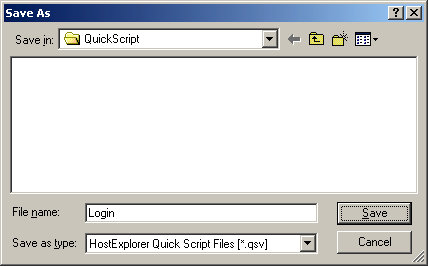
-
Click Options > Edit Session Profile.
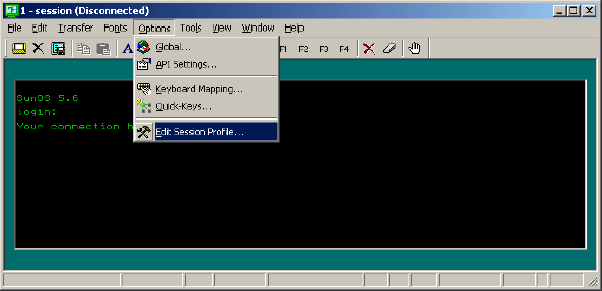
-
(Conditional) Select not to use the SecureLogin wizard at this time.
If SecureLogin prompts you to run the SecureLogin wizard, check the Don't Prompt Me In the Future check box, then click No.
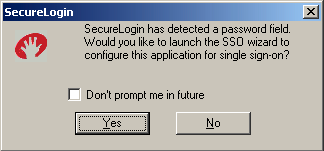
-
Expand the session in the Settings Group panel.
Click General in the Settings Groups panel, then click the Browse button next to the Auto Start Quick-Key drop-down list.
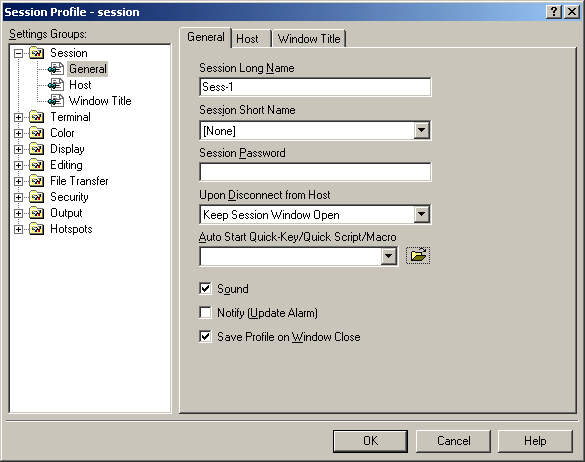
-
Browse to where you saved the Quick Script macro file, then click Open.
The default path is c:\documents and settings\all users\application data \hummingbird\connectivity \7.10\hostex\quickscript\login.qsv.
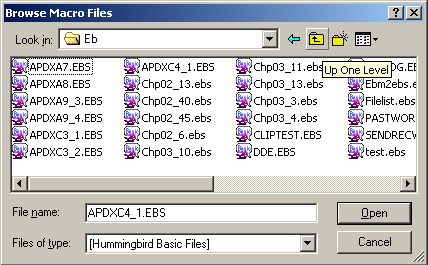
-
Click OK, then close the emulator.
-
Open the session again.
This can be performed by using the shortcuts on the Start menu and following the prompts, or creating a shortcut directly to the session using the following format:
"Path to hostex32.exe" -P Session name
Eg: "C:\Progra~1\Hummingbird\hostex32.exe" -P Session1
The emulator connects and displays the following dialog box.
IMPORTANT: Do not click OK.
